Ten Essential Works of Horror
By, William I. Lengeman III
 1. Horace Walpole (1717-1797)
1. Horace Walpole (1717-1797)
The Castle of Otranto (1764)
In his wide-ranging essay, Supernatural Horror in Literature, H.P. Lovecraft called The Castle of Otranto “thoroughly unconvincing and mediocre” and “tedious, artificial and melodramatic.” Modern-day readers not accustomed to Walpole’s archaic style might tend to agree. The kicker, Lovecraft asserts, is that Otranto “was destined to exert an almost unparalleled influence on the literature of the weird.”
First loosed on the world on Christmas Eve, in 1764, Otranto, which was essentially one of the first haunted house stories, was framed as a rediscovered ancient manuscript that told of various ghastly events taking place in a medieval castle.
One of the first Gothic novels, Otranto was followed by numerous imitators, that ranged from competent to downright  abysmal. One scholar estimated that more than two thousand Gothics were released in a three-decade span beginning in 1790.
abysmal. One scholar estimated that more than two thousand Gothics were released in a three-decade span beginning in 1790.
Walpole, who wrote numerous other now forgotten works, bought an English castle early in life and spent the next fifty years or so adding onto it and turning it into a tourist attraction. The story of Otranto was said to have come from Walpole’s dream of an ancient castle and a giant hand encased in armor, a gimmick that turns up, in slightly altered fashion, in the story.
 2. Mary Shelley (1797-1851)
2. Mary Shelley (1797-1851)
Frankenstein (1818)
Quick, name a literary work by Percy Shelley or his pal, Lord Byron - probably two of the better-known poets of their day. Okay, skip that question. Now, name something by Shelley’s wife, Mary.
Frankenstein is one of the earliest and arguably one of the most influential horror novels of all time and yet most contemporary readers – conditioned to modern-day excess - will probably not find the book all that horrifying.
No need to recount the basic premise of the novel – that of a scientist who broaches one of the ultimate taboos. Although, for those who base their knowledge of Frankenstein on James Whale’s classic 1931 film, it bears mentioning that Hollywood threw out virtually everything Shelley wrote, except the premise and the title. Purists looking for a more faithful recreation of Shelley’s book should turn to Kenneth Branagh’s 1994 filmed adaptation.
The idea for Frankenstein supposedly came to Shelley in a dream. She and her husband, Byron and a few others were spending a cold, rainy summer in a Swiss villa, amusing themselves by reading spooky stories and attempting to devise their own.
An interesting note is that just a few years after Shelley’s book appeared - in 1818 - it made its way to the stage, where it became a perennial favorite. Thomas Potter Cooke, one of the first thespians to attain renown as Frankenstein’s creation, was probably as famous, in his day, as that other incarnation of Frankenstein’s monster – Boris Karloff.
 3. Charles Dickens (1812-1870)
3. Charles Dickens (1812-1870)
A Christmas Carol (Being A Ghost Story of Christmas) (1843)
If his epitaph is to be believed, Charles John Huffam Dickens was “one of England’s greatest writers.” Best known for a number of classic novels that lacked supernatural content, Dickens also turned out numerous ghost stories and, as a magazine editor, did as much as anyone to popularize the notion of ghost stories as fictional constructs.
Dickens had fallen on hard times prior to writing A Christmas Carol. If the work he called “this Ghostly 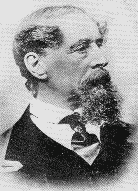 little book” isn’t the best-known ghost story ever written, then it’s certainly near the top of the list.
little book” isn’t the best-known ghost story ever written, then it’s certainly near the top of the list.
As for it’s protagonist, one Ebenezer Scrooge, he may or may not be the most miserable bastard ever rendered in prose – at least until the end of the story – but he certainly ranks up there with the worst of them.
As is the case with so many other great works of horror - Frankenstein, Dracula and Stevenson’s Dr. Jekyll and Mr. Hyde - most of us probably know Dickens’ story from one of the many movies that appeared over the years, most notably those in which crusty old Mr. Scrooge was portrayed by Alastair Sim, George C. Scott or Patrick Stewart.
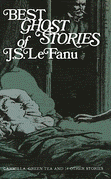 4. J. Sheridan LeFanu (1814-1873)
4. J. Sheridan LeFanu (1814-1873)
Best Ghost Stories of J.S. LeFanu (1964)
Though he is not very widely read today, Joseph Thomas Sheridan Le Fanu, an Irish journalist and fiction writer, was well known in his day for his many novels, most notably The House By The Churchyard (1861) and Uncle Silas (1864). LeFanu also wrote a number of supernatural tales, which were collected in several volumes.
Best Ghost Stories brings together sixteen of Le Fanu’s supernatural yarns, including Squire Toby's Will, An Authentic Narrative of a Haunted House, The Haunted Baronet, An Account of Some Strange Disturbances in Aungier Street and Mr. Justice Harbottle.
Also included are Le Fanu’s best-known stories – Carmilla and Green Tea. The former, which predated Stoker’s Dracula by almost a quarter of a century, is about a seemingly immortal vampire who is eventually dispatched by the now standard device – a stake through the heart. In Green Tea, Le Fanu pulls off the tricky feat of making a monkey seem menacing.
M. R. James offered high praise for E. F. Benson, a fellow ghost story writer, but reserved his loftiest accolades for LeFanu, whom he regarded as the unrivaled master of supernatural literature, even going so far as to preside over a 1923 reissue of his stories.
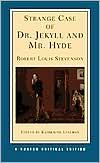 5. Robert Louis Stevenson (1850-1894)
5. Robert Louis Stevenson (1850-1894)
The Strange Case of Dr. Jekyll and Mr. Hyde (1886)
If you insist that horror literature must contain an element of the supernatural, then Dr. Jekyll and Mr. Hyde probably doesn’t belong on this list.
Scottish author Robert Lewis Balfour Stevenson was a sickly child who spent much time in bed, exercising his imagination by writing stories. This tendency continued into adulthood when he became well known as an essayist, poet and author of fiction and travel books.
It’s a toss-up as to which of Stevenson’s books is more popular – Treasure Island or Jekyll & Hyde. Like its predecessor, Frankenstein, and Dracula, which came along about a decade later, Jekyll was supposedly based on a dream.
More a tale of science gone wrong than a horror yarn, Jekyll is, nonetheless, not without its horrific elements as the respected Dr. Henry Jekyll uses a drug to unleash his dark half and a drug to reign it back in. Over time Mr. Edward Hyde, his alter ego – or perhaps, more correctly, his id - begins appearing without the benefit of drugs and proceeds to make a mess of Jekyll’s world, with disastrous results.
Like so many other classic horror tales, Jekyll was a fertile source for cinematic adaptations. These began as early as began in 1908 and number upwards of thirty, depending on who’s counting.
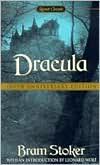 6. Bram Stoker (1847-1912)
6. Bram Stoker (1847-1912)
Dracula (1897)
Humankind can be divided into two groups – those who thrive on vampire literature and those who wouldn’t care if they never heard the “v” word again. Dracula was by no means the first fictional vampire tale, but it goes without saying that Stoker’s novel is the seminal fictional work on vampirism. Lovecraft called it “almost the standard modern exploitation of the frightful vampire myth.”
At its essence, Dracula is a tale of good versus evil, albeit evil of a rather cultured and seductive sort. The story is yet another that is so well known that it doesn’t need to be summarized.
There are various theories on the genesis of Dracula. Stoker claimed, like Mary Shelley, that the idea for his greatest work came from a dream. Incidentally, one of the first fictional vampire tales, The Vampyr, was spawned during the same fateful summer that Mary Shelley dreamed up Frankenstein.
Other theories posit that Stoker was influenced by Le Fanu’s vampire, Carmilla. M. R. James, who chided Stoker’s work for its excesses, claimed that it was inspired by The Vampire of Kring, an 1856 magazine article.
Though he wrote other notable works, such as The Jewel of Seven Stars and The Lair of the White Worm, Stoker was ultimately a one-hit wonder. But what a smash hit it was.
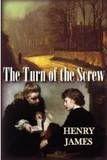 7. Henry James (1843 – 1916)
7. Henry James (1843 – 1916)
The Turn of the Screw (1898)
Henry James, an American-born author who became a British citizen late in life, was a prolific writer who turned many well-known novels, short stories and plays, and a considerable amount of literary criticism. Best known as a “straight” writer, James took a detour into horror in 1898, with The Turn of the Screw, though whether or not the occurrences in the story are of supernatural origin is still a matter of some debate.
The tale of a governess charged with tending to two orphaned siblings, the story takes a grim turn when what are apparently the spirits of two deceased servants begin making themselves known.
Lovecraft’s praise for the work, which first appeared in serial form in Collier’s Weekly, was something of a backhanded compliment. He remarked that James “triumphs over his inevitable pomposity and prolixity sufficiently well to create a truly potent air of sinister menace,” and goes on to say that he “is perhaps too diffuse, too unctuously urbane, and too much addicted to subtleties of speech to realise fully all the wild and devastating horror in his situations; but for all that there is a rare and mounting tide of fright.”
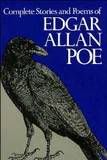 8. Edgar Allan Poe (1809-1849)
8. Edgar Allan Poe (1809-1849)
Complete Stories and Poems of Edgar Allan Poe (1984)
H. P. Lovecraft was generous with his praise for Edgar Allan Poe, noting that it is “hard for any mature and reflective critic to deny the tremendous value of his work,” and going on to say, “to him we owe the modern horror-story in its final and protected state.”
The sometimes-jumbled facts of Poe’s short life – and more so of his death, apparently after a drunken binge – tend sometimes to overshadow his contributions to supernatural literature. Though he was plagued throughout his short life by the ills of drug addiction, alcoholism and depression he was surprisingly productive, working as an editor for several magazines, turning out a great body of literary criticism, pioneering in the field of the detective story and turning out some of the all time great works of macabre fiction and poetry.
Poe preferred to work in the shorter forms. His only crack at a lengthier yarn, The Narrative of Arthur Gordon Pym, appeared in 1838. That work and the rest of his fiction and poetry are collected in this 832-page volume, which first appeared in 1966 and was reissued almost two decades later.
Included are all of the better known Poe tales and poems, such as The Masque of the Red Death, The Fall of the House of Usher, The Purloined Letter, Murders in the Rue Morgue, The Cask of Amontillado and The Pit and the Pendulum, just to name a few.
 9. M.R. James (1862-1936)
9. M.R. James (1862-1936)
Collected Ghost Stories (1999)
In 1934, Clark Ashton Smith, no slouch in the field of speculative literature, wrote that Montague Rhodes James “is perhaps unsurpassed in originality by any living writer.” Seven decades later, novelist Michael Chabon waxed equally effusive, calling James’ short story, Oh, Whistle and I’ll Come to You, My Lad, “one of the finest short stories ever written.”
Though he is widely considered to be one of the greatest spinners of ghostly yarns ever, James’ pen wasn’t pressed into the service of supernatural literature until he was in his thirties. A respected scholar of antiquities, he wrote the stories he is so famous for as a diversion, primarily to entertain friends at what became an annual ritual - the recitation of a new story to rapt audiences every Christmas Eve.
Among James’ most memorable ghost stories are Casting the Runes, The Mezzotint, A Warning to the Curious, and the aforementioned Oh, Whistle and I’ll Come to You, My Lad – a work whose title alone drips with subtle menace.
James’ stories have been appeared in numerous anthologies and collections over the years. This volume brings together the contents of the four ghost story collections published in his lifetime and adds four previously uncollected stories – for a total of 31 stories in all.
 10. H. P. Lovecraft (1890-1937)
10. H. P. Lovecraft (1890-1937)
Tales (2005)
By virtually anyone’s standards, Howard Phillips Lovecraft was something of an odd bird. He spent most of his life in his hometown of Providence, Rhode Island, in the company of two elderly aunts, and engaged his various scholarly interests, while producing a substantial number of “weird” tales.
Lovecraft has been called the most important American horror writer since Poe, but not everyone would agree with that statement. Lovecraft is still revered and reviled – sometimes even in the same sentence – for his distinctive style and what are perceived as the excesses of his writing.
Many of Lovecraft’s lurid tales were churned out for the pulps of the day – most notably Weird Tales – for the princely sum of something like a penny a word. In choosing to issue a volume of his work, the Library of America puts this pulp writer on a par with such luminaries of American letters as Emerson, Faulkner, James, Poe and Steinbeck, just to name a few.
Like his predecessor – Poe - whom he admired greatly, Lovecraft preferred to work in the shorter forms. In Tales, editor Peter Straub has gathered twenty-two of Lovecraft’s stories - some 850 pages worth - including such perennial favorites as Rats in the Walls, The Colour out of Space, The Call of Cthulhu and At the Mountains of Madness.




